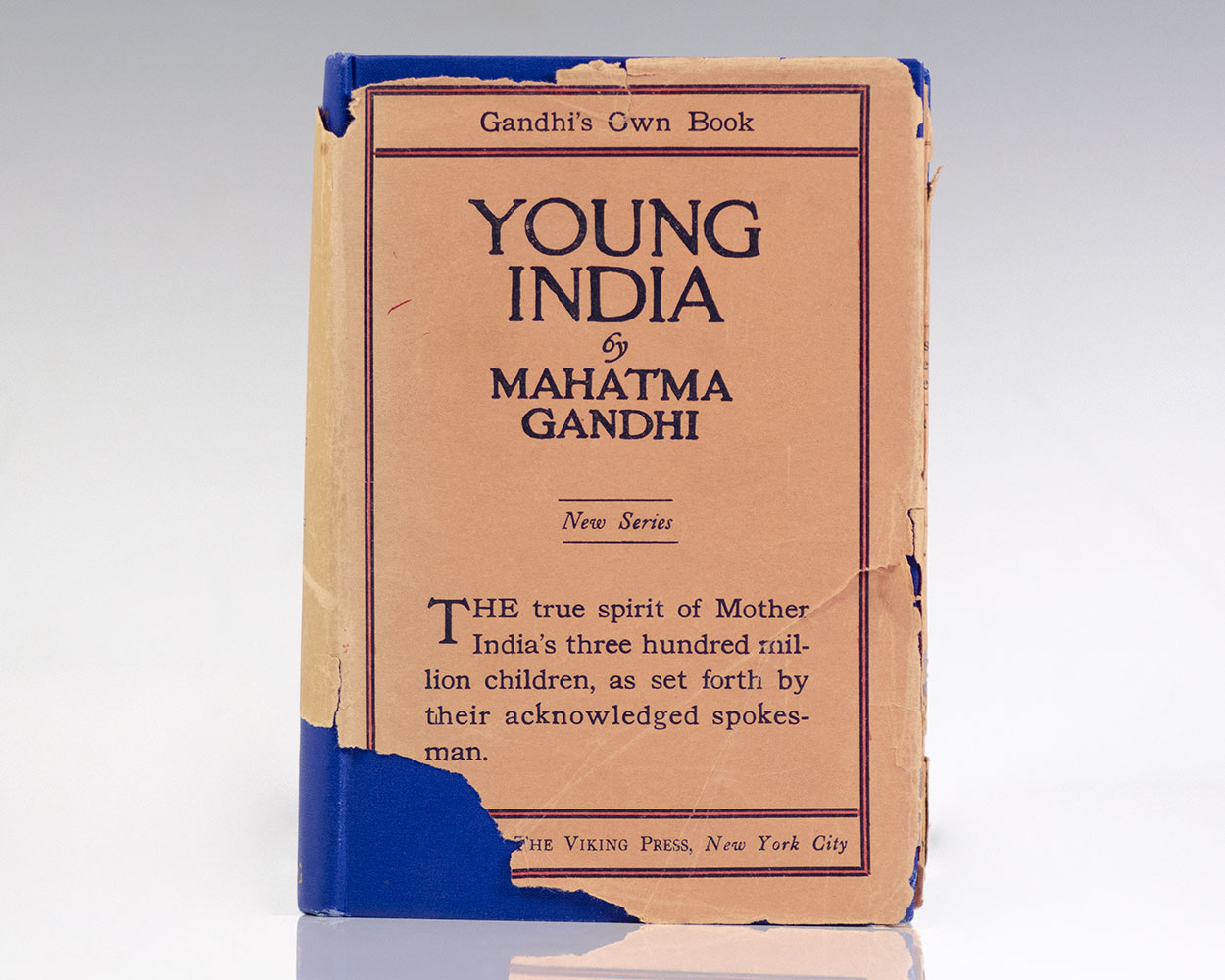Mahatma Gandhi Photograph.
Rare large format gelatin silver print of Mahatma Gandhi
Mahatma Gandhi Photograph.
GANDHI, Mohandas K. [Mahatma].
$1,250.00
Item Number: 139253
Large format gelatin silver print photograph of Mahatma Gandhi spinning at Birla House in 1942. In the early 1920s, Gandhi expanded his nonviolent non-co-operation platform to include the swadeshi policy – the boycott of foreign-made goods, especially British goods. Linked to this was his advocacy that khadi (homespun cloth) be worn by all Indians instead of British-made textiles. Gandhi exhorted Indian men and women, rich or poor, to spend time each day spinning khadi in support of the independence movement. In good condition. Matted. The photograph measures 15 inches by 18.5 inches. The entire piece measures 19.5 by 23 inches.
Born on October 2, 1869, Mohandas Karamchand Gandhi was trained in law at the Inner Temple, London, and called to the bar at age 22. He moved to South Africa in 1893 where resided for 21 years and adopted his still evolving methodology of Satyagraha (devotion to the truth), or nonviolent protest, for the first time in the wake of the Boer War. In 1915, Gandhi returned to India with an international reputation as a leading Indian nationalist, theorist and community organizer. He joined the Indian National Congress, assuming leadership in 1921 and led nationwide campaigns to ease poverty, expand women’s rights, and, above all, achieve Indian independence from British rule. In the wake of World War II, Gandhi opposed providing any help to the British war effort and campaigned against any Indian participation in the war. As the war progressed, Gandhi intensified his demand for independence, calling for the British to Quit India in a 1942 speech in Mumbai, hours after which he was arrested by the British government. Gandhi’s imprisonment lasted two years, although he was initially sentenced to six. He was released in May of 1944 due to failing health. Following the end of WWII, the new British government passed the Indian Independence Act of 1947, partitioning the British Indian Empire was into two dominions, a Hindu-majority India and Muslim-majority Pakistan. As many displaced Hindus, Muslims, and Sikhs made their way to their new lands, religious violence broke out, especially in the Punjab and Bengal. Eschewing the official celebration of independence in Delhi, Gandhi visited the affected areas, attempting to provide solace. In the months following, he undertook several fasts unto death to stop religious violence. In 1948, Gandhi was assassinated on his way to a prayer meeting in the Birla House garden. His death was mourned nationwide; over two million people joined the five-mile long funeral procession in his honor.





